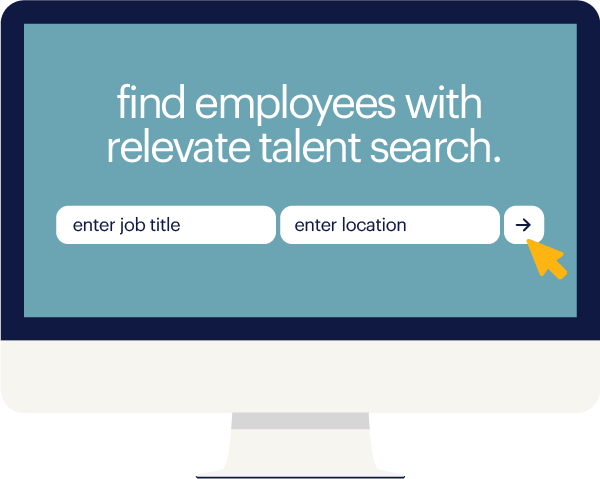In the market for a project engineer? You and everyone else, it turns out. According to labor-insights firm Burning Glass, more than 54,000 job ads went up for the role in the last 12 months alone.
Given the essential nature of their job — project engineers are the quarterbacks of the engineering team who move complex projects along in a timely manner — it's no wonder they're in high demand. And if you're looking to hire one to navigate the waters of your current project portfolio, you probably don't have any time to spare. So how do you find a best-fit project engineer — fast?
These tips can put you on the path toward a speedy and solid hire:
1. review your hiring practices for efficiencyReady to learn more about how to approach your new-and-improved recruitment strategy? Read on.
1. speed up your hiring process
Inefficient hiring practices not only slow you down, they slow down the team you're hiring for, too. If it's been a while since you've taken a hard look at how quickly (or not so quickly) you move through your hiring process, review your methods to see where they could be made more efficient. This chart below can help you decide if it's time for a new, brisker approach:
2. develop a competitive compensation package
To attract the best candidates out there, you'll need to offer a competitive compensation package that puts you ahead of the pack of competitors in your area. For project engineers, you'll likely need to offer a fair amount for the best hire — with such a specialized skill set and high levels of responsibility, they don't come cheap. To get an idea of what to offer, head to Randstad's salary guide.
Depending on the cost of living, the local demand for project engineers and other factors contingent on your specific market, salaries numbers might be higher or lower in your area. To determine the most accurate number for your hiring needs, visit our salary calculator to see the most up-to-date, area-specific data for your location.
3. identify the top skills for project engineers
Not all project engineers are created equal. Because experience, education, specialties and more vary from applicant to applicant, you'll need to be specific about the type of project engineer your company needs to bring on board. Doing so will help you define the profile of your ideal hire and will form a core piece of your job description.
To figure out who you need and how to put that into words, meet with the hiring manager and other leaders who will work closely with the project engineer to define the scope of the role. Decide, for example, whether this person will have a focus on quality assurance as a check on technical teams, or a heavier focus on resource planning for projects. Answering questions like these will help you become more targeted in your search.
A good place to start is to think about what the candidate needs that's absolutely essential ("must-have" skills) and what's not a requirement but would make them even more appealing ("nice-to-have" skills). For example, your project engineer has to have outstanding project management skills — that's a no-brainer — but customer service skills are probably less critical but may come in handy depending on the specifics of the role. Do this exercise with all the desired skills that pop up in your talks with colleagues.
To give you a head start, here are the most sought-after skills for project engineers from the 54,000 job ads posted over the past year:
project management
scheduling
budgeting
civil engineering
AutoCAD
construction management
4. write an eye-catching job description
Given all of the opportunities available to today's project engineers, posting a poorly written job description can derail your search in no time. To make sure you attract top applicants for your open role, keep these three tips for writing an effective job ad top of mind.
don't write like a robot
A good job ad needs a lot of information: requirements and desired skills, information about the company, what the job will be like day to day and more. So it's no surprise that some job ads come out reading like giant lists produced by a robot — and quickly scare off applicants.
But that's the problem: Humans don't like dense lists and they're turned off by cold writing that sounds transactional. What works better?
Focus on the human aspects of the role, and answer the questions candidates are definitely going to have, like:
- How many projects will they be expected to oversee at any given time?
- Will they have a role in hiring the team members involved in a project?
- What hand will they have in creating and planning schedules, and forecasting the need for engineering resources?
Highlighting these aspects of the role can help the applicant visualize themselves in the job and decide whether it's a fit.
show how this job is meaningful
The job seekers of today really care about the work they do. They want the sizable portion of their lives spent working to mean something, to have an impact. If you can surface in your ad the meaningful aspects of this job — or of your company, like its mission and values — you'll have a much better chance of connecting with top applicants.
For example, will this role be one of the most important in the company because its purpose is to see that enterprise projects are completed on-time and on-budget? Will they be mentoring teams of engineers and helping them to grow in their careers? How are the engineering projects your firm is working on benefiting society or serving a larger purpose?
speak to the job's meaning in your posting to have a much better chance of connecting with top talent.
make it easy to skim
If your job post is a giant blob of text, you're in trouble. In fact, job ads should be so easy to read that potential applicants can skim them and find the information they need to decide if the job is a potential fit in a matter of seconds.
What does this mean for you, the author?
- No long, rambling sentences. Stick to short, clear ones.
- Break up text with descriptive subheadings ("The Role," "What We Do," "Our Values").
- Short paragraphs, never more than three or four sentences.
- Use simple, clear language (no big words when a simpler one will do).
- Use bulleted lists to convey info like experience required or your benefits offerings.
Putting these tips into action will start you on your way toward posting a job that people actually want to apply to. For more ways to hook potential applicants, visit our guide to writing highly effective job descriptions.
5. brush up on the latest industry trends
Before embarking on any hiring process, make sure you're informed about the latest trends impacting both the role and the engineering industry. This will ensure you're making hiring decisions with the context you need to evaluate both your current and future staffing plans.
Here are a few of the latest trends you'll want to know about before diving in:
- According to the U.S. Bureau of Labor Statistics, the number of engineering manager jobs is forecast to rise three percent by the end of 2029, the equivalent of 5,100 new positions.
- Trained engineers make up less than two percent of the overall U.S. labor force, so landing top talent is only going to get more competitive as demand increases across the industry.
- Driving the most demand for project engineers is California, which has more than double the number of open roles than the second-place state (Texas), so employers in the Golden State will need to be especially savvy in their recruitment efforts.
engineers make up less than 2% of the overall U.S. labor force.
6. choose your channels to find candidates
There are any number of ways to go about finding project engineers. You could post ads on LinkedIn and other high-traffic job sites, offer incentives for referrals from your current workforce or set up shop at an industry career fair — and that's just the tip of the iceberg. One option isn't necessarily better than the others, and the route(s) you choose will depend on such factors as the role you're looking to fill, your hiring budget and the amount of hiring your company needs to do.
With so many avenues to pick from, finding top candidates can be harder than it looks. To make it easier and to reduce the risk of making a bad hire, more and more companies are turning to professional staffing firms, which have access to qualified, vetted pools of top engineering candidates.
If you're interested in learning more about how partnering with a staffing firm can help you find your next great project engineer, get in touch with one of Randstad's engineering experts today. Or, if you'd rather search available candidates from our network, head on over to our Find Employees portal.








